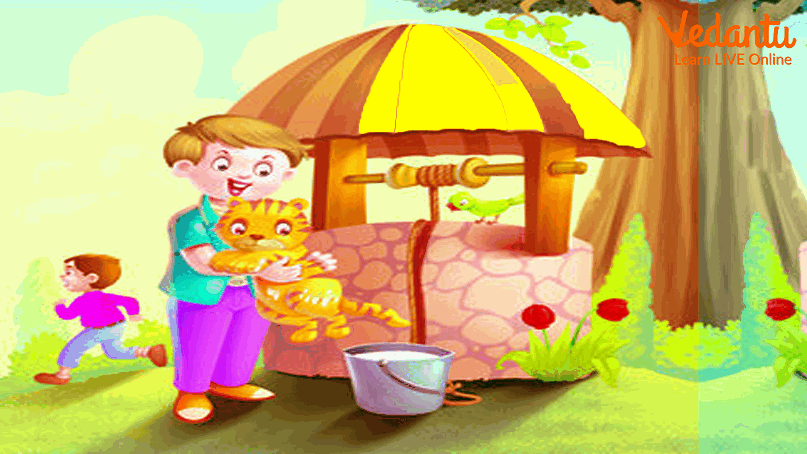What Is the Importance of Rhymes in a Child's Development?
Great rhyming poets make excellent readers! Songs and rhymes are essential components of language development, positive interaction, and early childhood learning. Young children tune in to the rhythm of language in sounds, words, and phrases as they hear and practise rhymes and songs. In addition, they hear and practise inflection, pitch, and facial expression. Most importantly, this fundamental learning occurs between children and adults in a fun and positive environment.
Nursery rhymes and songs help to lay the groundwork for language, learning, and communication in infancy. When we sing songs and rhymes with young children, we are exposing them to repetitive lines and language sounds. Nursery rhymes continue to be an important source of interaction and learning between children and adults as they grow.
What Is the Background of the Poem – Ding Dong Bell?
"Ding Dong Bell," also known as Ding Dong Dell, is a popular nursery rhyme with an anti-animal cruelty message. "Jacke boy, ho boy newes,/ the cat is in the well,/ let us ring now for her Knell,/ ding dong ding dong Bell," according to the organist of Winchester Cathedral, John Lang, was the first printed variant of the rhyme around 1580. The song is arranged as a canon or round for four voices by Thomas Ravenscroft in his Musicks Miscellanie of 1609.
Unsurprisingly, the descriptive phrase "ding, dong" has come to be associated with the ringing of bells. After all, it's the sound they make, and it's a fantastically evocative onomatopoeic description. Its use in Shakespeare's plays at the turn of the 17th century is evident by the fact that it appears a couple of times – in the Tempest (Act 1, Scene 2), "Sea nymphs hourly ring his knell:/ Hark! Now I hear them – Ding, dong, bell," and in Act 3, Scene 2, of The Merchant of Venice, "Let us all ring fancy's bell;/ I'll begin it – Ding, dong, bell."
The earliest variant is fascinating because the cat is left to drown in the well and the description of the sound of the bell appears at the end of the rhyme. The sound of the bells, like Shakespeare's use of the description in the Tempest, is associated with the knell, which has connotations of death and funerals. However, by the time we get to the modern variant of the rhyme, not only has ding, dong been moved from the end of the rhyme to the beginning but the cat has also been rescued from the well, courtesy of Tommy Stout's good offices. The modern version also begs the question of who the villainous Johnny Flynn and the angelic Tommy Stout are.
Although we now consider neutering to be an acceptable method of controlling the population of our feline friends, it was once thought to be barbaric. The preferred method of cat control was to drown the moggies, and since wells were a source of water for many people, it is not difficult to imagine that the unfortunate was dunked in a well.
Due to modern sensitivities, as well as the positioning of nursery rhymes as a source of enlightenment and education for the young, the latter variant can be interpreted as an exhortation to the young not to be cruel to our furry friends.
The origin of this rhyme sheds interesting light on the changing mores and sensibilities throughout history.

Ding Dong Bell
The Poem – Ding Dong Bell!
Mostly Available Version:
Ding dong bell,
Pussy’s at the well.
Who took her there?
Little Johnny Hare.
Who’ll bring her in?
Little Tommy Thin.
What a jolly boy was that?
To get some milk for pussy cat,
Who ne’er did any harm?
But played with the mice in his father’s barn
The Modern Version:
Ding, dong, bell,
Pussy’s in the well.
Who put her in?
Little Johnny Green.
Who pulled her out?
Little Tommy Stout.
What a naughty boy was that?
To try to drown poor pussy cat,
Who ne’er did him any harm?
But killed all the mice in the farmer’s barn
The Original Version – First Recorded Version:
Jacke boy, ho boy newes,
the cat is in the well,
let us ring now for her Knell,
ding dong ding dong Bell
Conclusion
We hope you had fun reciting the poem as well as learning something new and fascinating about it. Do share the background story of the poem with your friends. If you wish to read more of such interesting stories and poems, head to our website and explore from the plethora of articles for kids learning.


FAQs on Ding Dong Bell – The All-Time Favourite Rhyme
1. What is the moral of the poem – Ding Dong Bell?
The lyrics of the poem Ding Dong Bell were used to help a child understand that it was unacceptable and cruel to harm any animal that had done no harm.
2. What are other nursery rhymes?
The other nursery rhymes are Humpty Dumpty, Baa Baa Black Sheep, Twinkle Twinkle, London Bridge, Mary Had a Little Lamb, etc.





